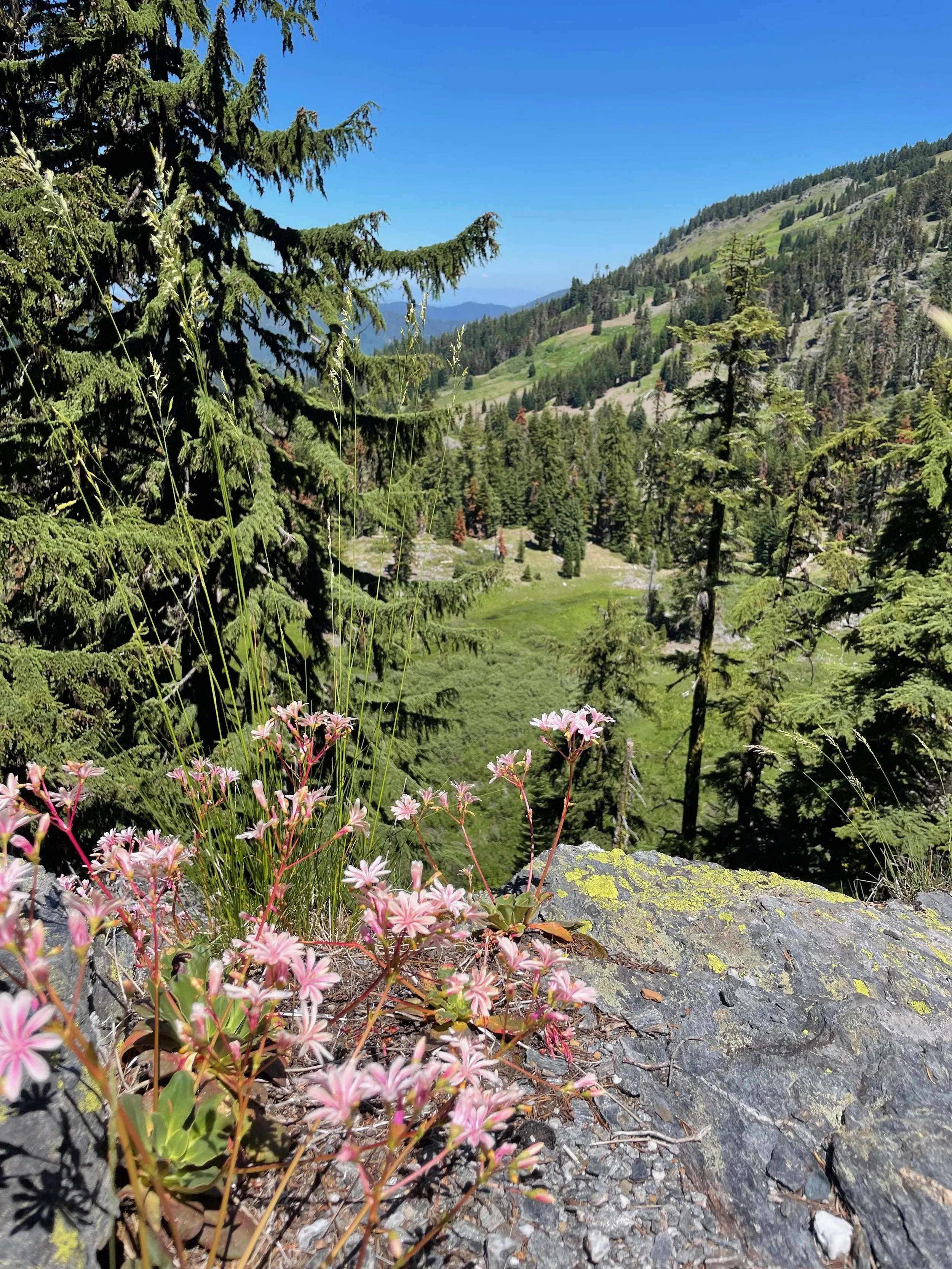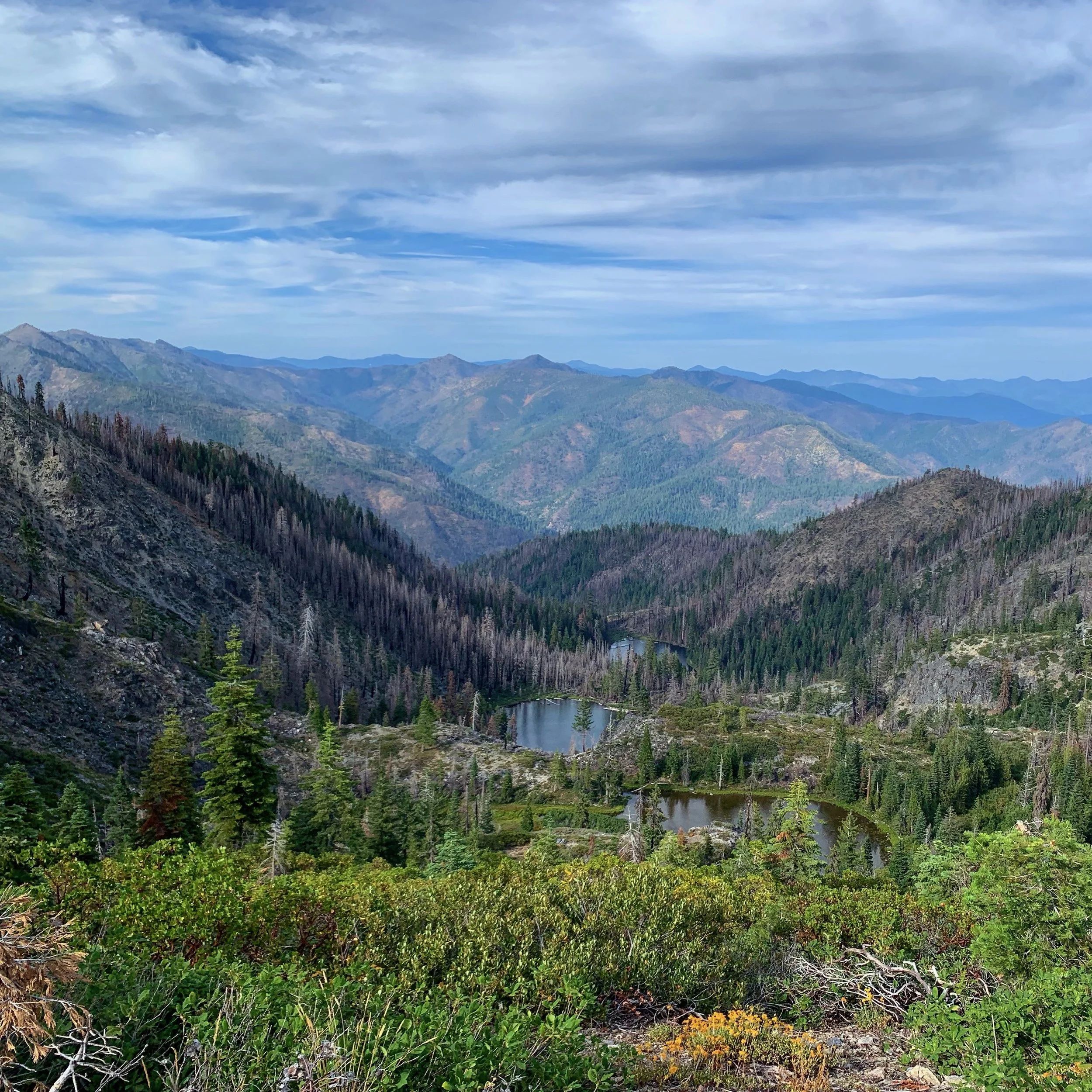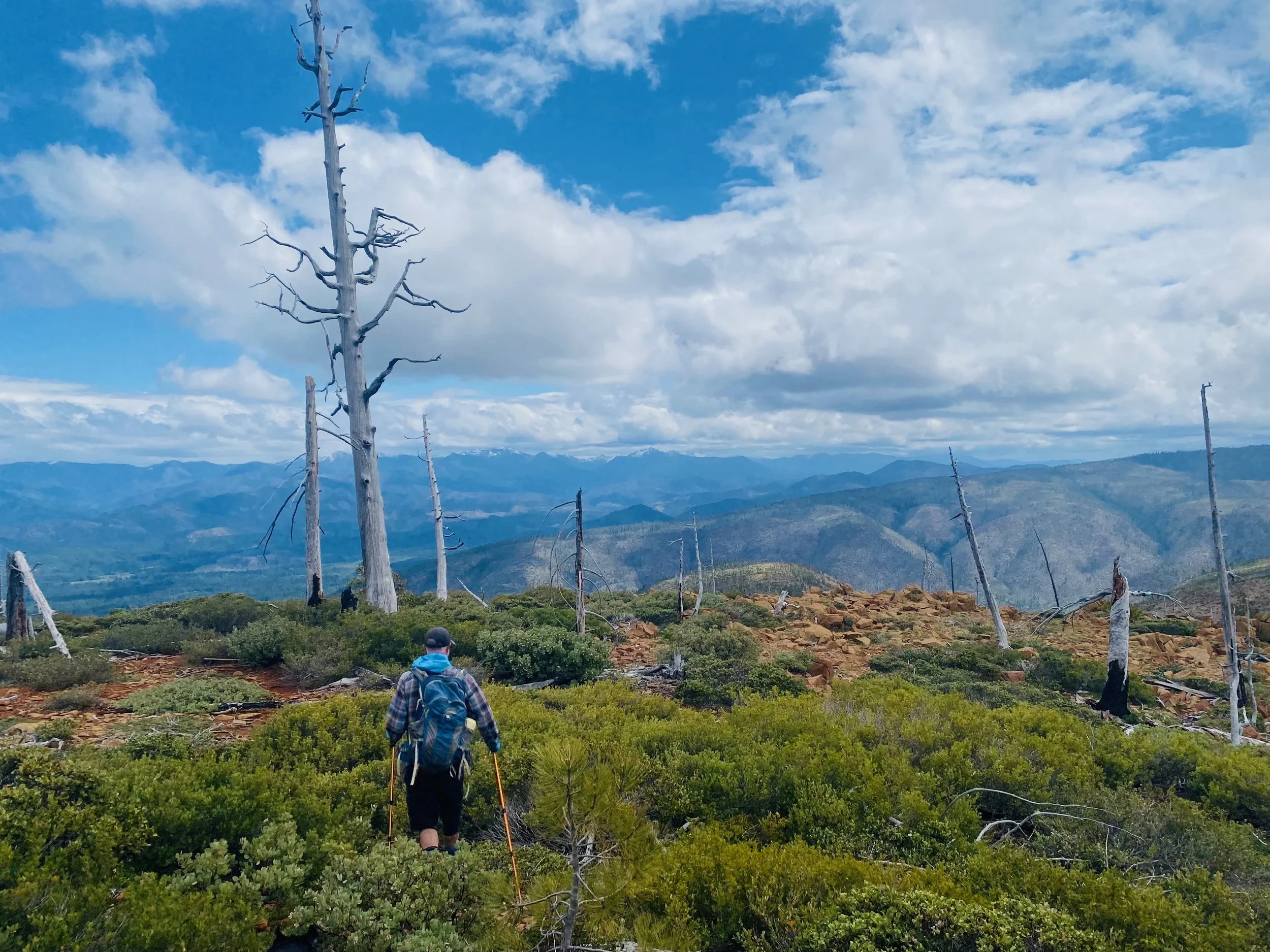Rolling back the Roadless Rule could open up some of the nation’s last remaining wild landscapes for exploitation.
Written by Haleigh Martin in July 2025
Native Siskiyou Lewisia blooms atop a rocky outcrop within the Condrey Mountain Roadless Area on the Siskiyou Crest. Credit: KS Wild
Across southwestern Oregon and northwestern California is some of the wildest, undeveloped land in the lower 48 states. One could venture out into the woods for a week and never see another single human but would likely find fascinating plant life, trees that have survived numerous generations, birdsong filling the air and dozens of sneaky critters scurrying along the forest floor, and cold, clean water rushing through creeks and streams.
What we have here in our backyards is not an experience that every American gets to have.
Not everyone across the country has such ample access to public lands right outside of their front door. In fact, many people across the country may have to drive hours to get to their state’s singular national forest. There is a reason why the rivers in this corner of the country have some of the best salmon and steelhead runs in the country. There is a reason why people travel from states away to backpack and raft and camp. There is a reason why many wildlife species populations have persevered here but have gone extinct in many other parts of the country. This region is extremely unique in its wild nature.
This wild nature doesn’t just persist without protection. The vast wildlands of this region exist because people have fought for conservation of these landscapes. From the Wild & Scenic Rivers Act to the Wilderness Act to the Endangered Species Act, many policies in recent U.S. history have garnered the support of the public and decision-makers in order to keep the wild wild.
Unfortunately, those policies aren’t carved in stone, and from time to time, folks in power will seek to revoke protections that keep them and their allies from exploiting and developing the very places many people have worked so hard to protect. We are currently watching this play out with the proposed rollback of the 2001 Roadless Rule.
What is the 2001 Roadless Rule?
In 2001, the Roadless Area Conservation Rule was adopted with massive public support to protect 58.5 million acres of roadless national forest land in 39 states. The Roadless Rule was the result of years of work and public input. The public comment period set a record with 1.6 million public comments submitted. The rule protects 58.5 million acres of national forests over 39 states from new road construction, and prohibits the logging of roadless areas in the National Forest System.
What’s happening with the Roadless Rule right now?
In late June, Secretary of Agriculture Brooke Rollins said that the US Forest Service (USFS) would be rescinding the Roadless Rule. Secretary Rollins, President Trump, and other GOP supporters of the rollback have framed the rule as “overly restrictive,” claiming it impedes wildfire mitigation and local forest management. But researchers and folks who are familiar with the nation’s few remaining roadless forests caution that the opposite is true.
What’s at stake in rolling back the 2001 Roadless Rule?
A view into the Siskiyou Wilderness from the Siskiyou Inventoried Roadless Area in northern California. Roadless areas often border wilderness areas, effectively expanding their values for wildlife, recreation, clean water, and more.
Eliminating the Roadless Rule would not only destroy some of the most cherished recreation areas (11,337 climbing routes, more than 1,000 whitewater paddling runs, 43,826 miles of trail, and 20,298 mountain biking trails as well as sections of the Continental Divide, Pacific Crest, and Appalachian National Trails)— it would also threaten drinking water sources, imperil wildlife species and their habitats, and cost taxpayers money. Also, contrary to the Agriculture Department’s rationale, rescinding the rule would increase the risk of wildfires. New research now in peer review shows that from 1992-2024, wildfires were four times as likely to start in areas with roads than in roadless forest tracts.
I believe I can speak for myself and many others when I say that the forests, rivers, meadows, and other wild spaces are what make this region so special. They offer recreation experiences like no other, they house some of the most unique wildlife and plant species in the country, they offer ample hunting and angling opportunities, and they are important spaces for many of us to escape to to unplug and recharge from the day-to-day world. The contiguous wild spaces of this region and the nation are necessary for the future of many ecosystems, and rolling back the Roadless Rule to increase logging and resource extraction will undoubtedly cause more harm than good.
PREPARE FOR ACTION
Dozens of U.S. representatives and senators have signed onto the Roadless Area Conservation Act of 2025 which would codify the Roadless Rule so that only an act of Congress could roll it back.
As we track the progress of that and an upcoming open comment period for public weigh-in, we will be offering routes of action you can take to let your elected officials and other decision makers know you value the Roadless Rule and all the wild spaces it serves to protect.
Image above taken while recreating in and exploring the South Kalmiopsis Inventoried Roadless Area (104,357) in southern Oregon. Credit: Sydney Wilkins




